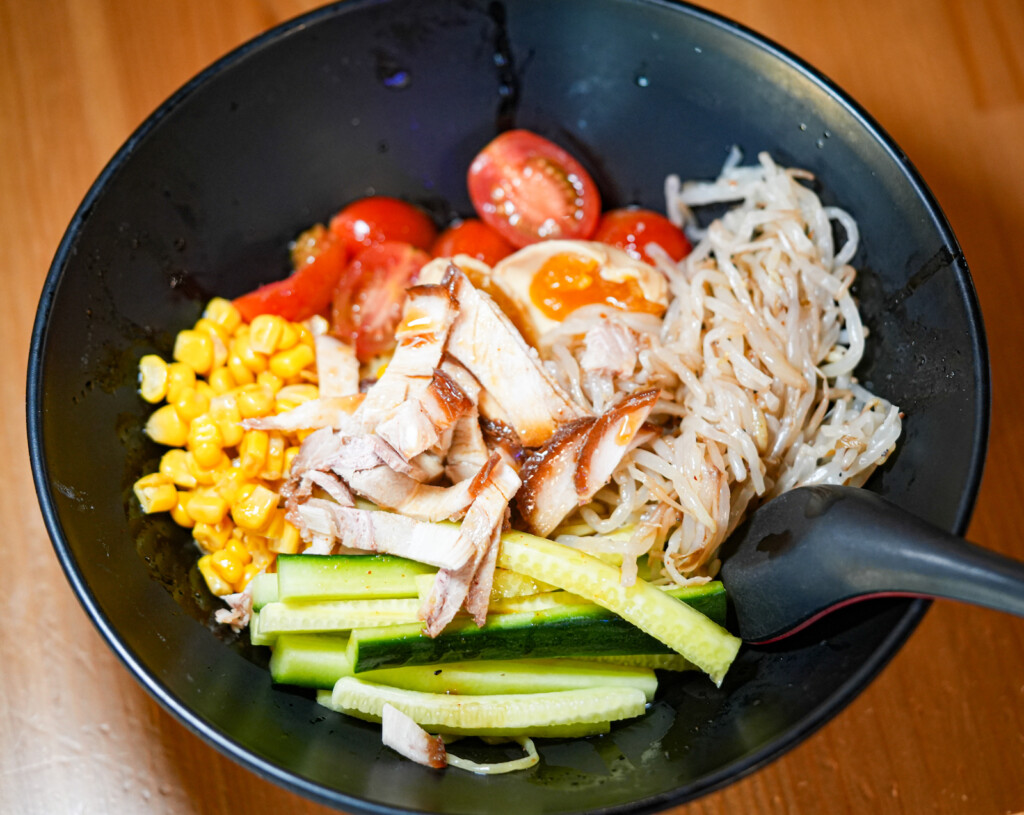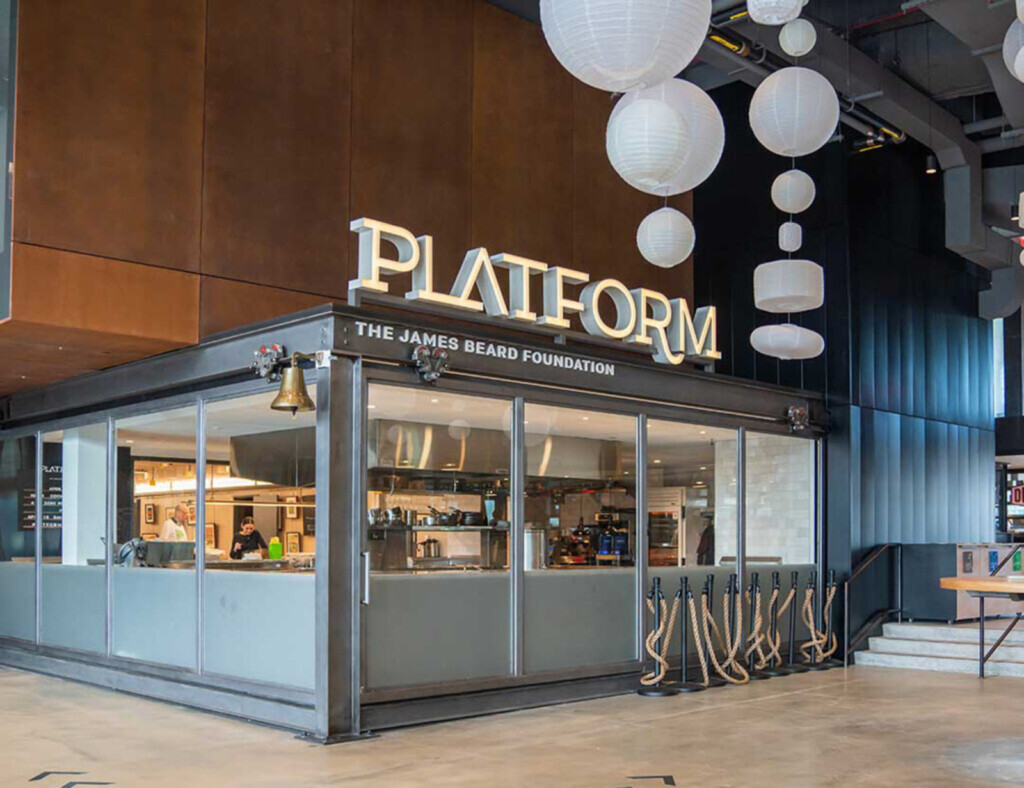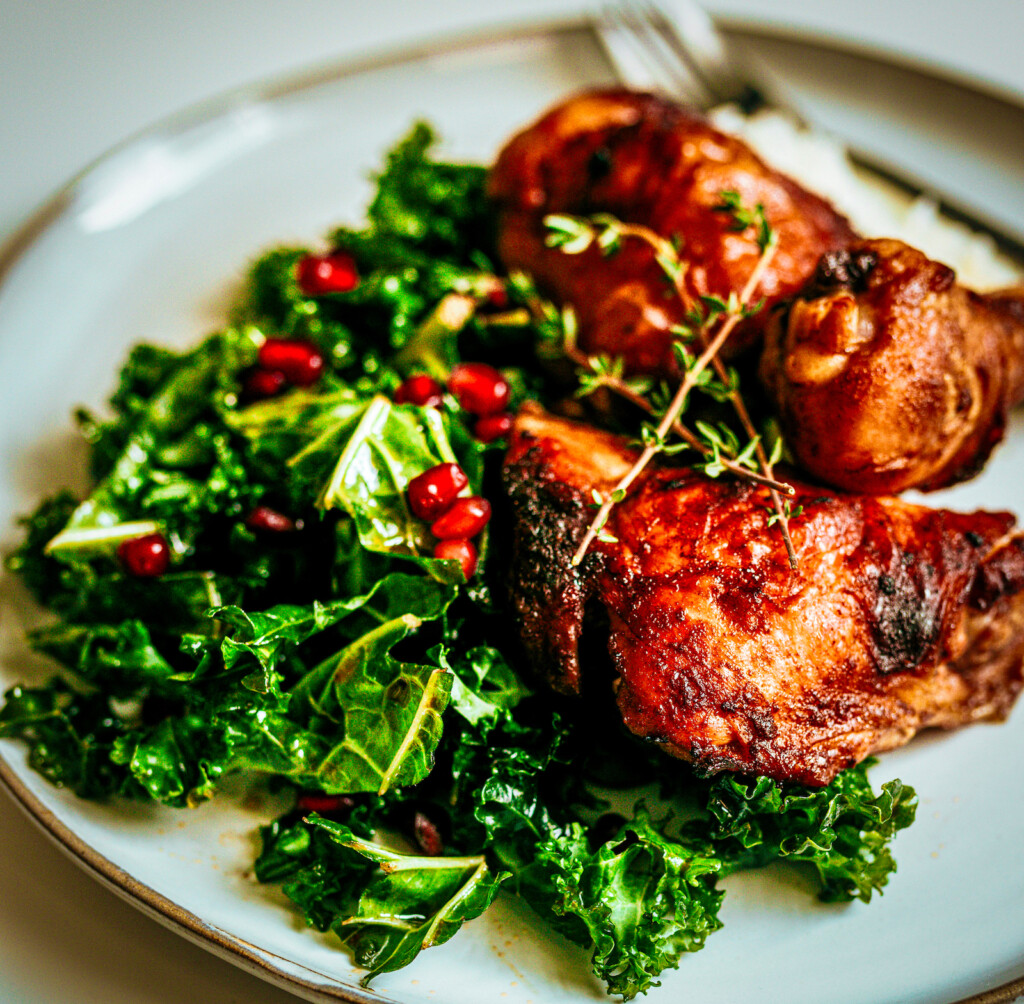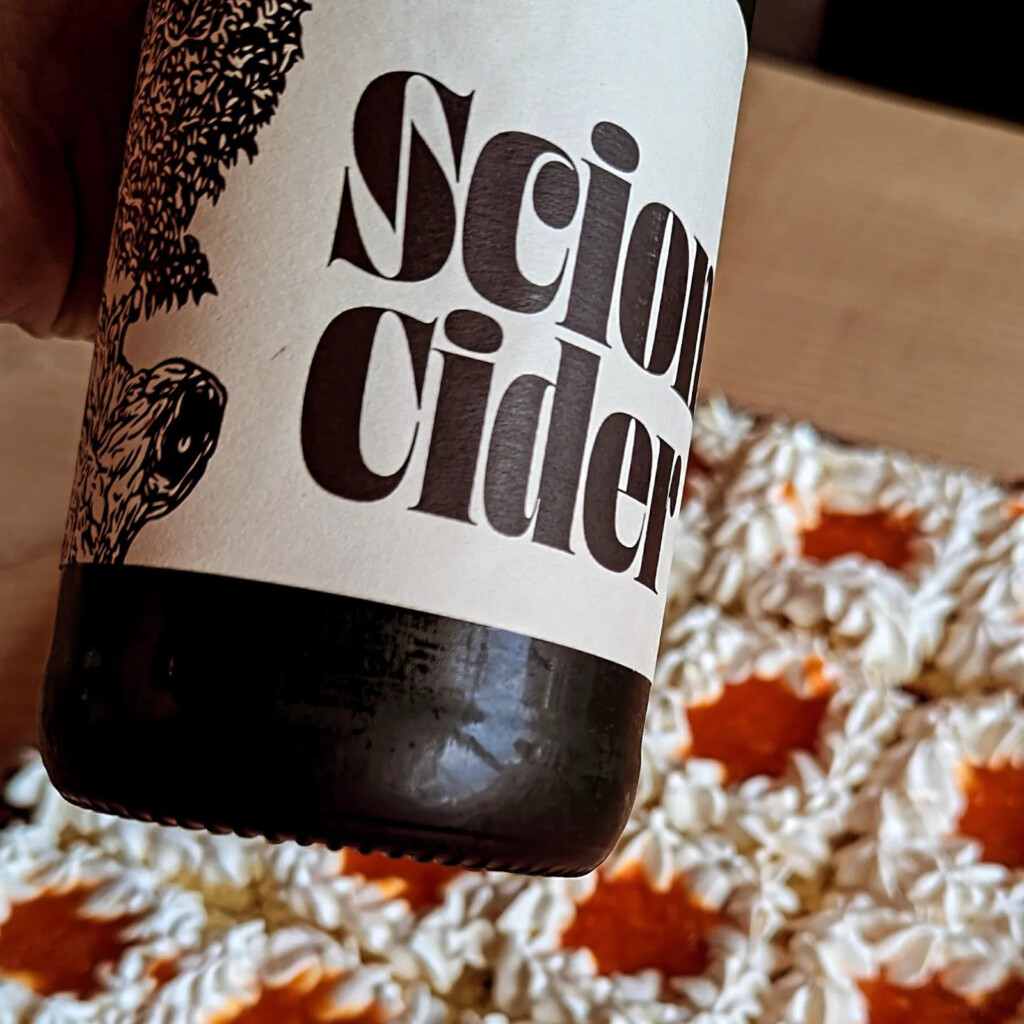As someone who lived in Japan, I love the ramen boom that has taken place here in the U.S. over the past decade or so. In my opinion, you can’t have too much ramen, which is the noodle equivalent of a warm hug. For those who might only be familiar with dried, instant grocery store ramen, here is a quick overview of ramen and its origins.
Ramen’s roots can be traced back to Chinese wheat noodles. Chinese immigrants brought those noodles to Japan in the late 19th or early 20th century. Initially, they were known as “shina soba” with “shina” being an old term for China and soba meaning noodle. In the early 20th century, ramen began to evolve in Japan. The first ramen shops appeared in the 1910s, primarily in port cities like Yokohama, where Chinese immigrants established eateries. After World War II, ramen saw a significant transformation. The availability of inexpensive and convenient instant ramen, created by Momofuku Ando of Nissin Foods in 1958, played a crucial role in making ramen a staple food in Japan. Instant ramen offered a quick, affordable meal and became immensely popular worldwide. This is the ramen most of us lived on during our college years.
Over time, ramen evolved into various regional styles, each with its unique characteristics. For example, Hakata ramen is known for its rich, pork-based tonkotsu broth, while Sapporo ramen features a miso-based soup with hearty toppings. Shoyu (soy sauce) and Shio (salt) ramen are also popular variations, each with distinct flavor profiles. During a recent visit to Ramen Haus in Farmington I noted that this modern ramen shop offers a wide variety of styles and varieties of ramen. The more the merrier!
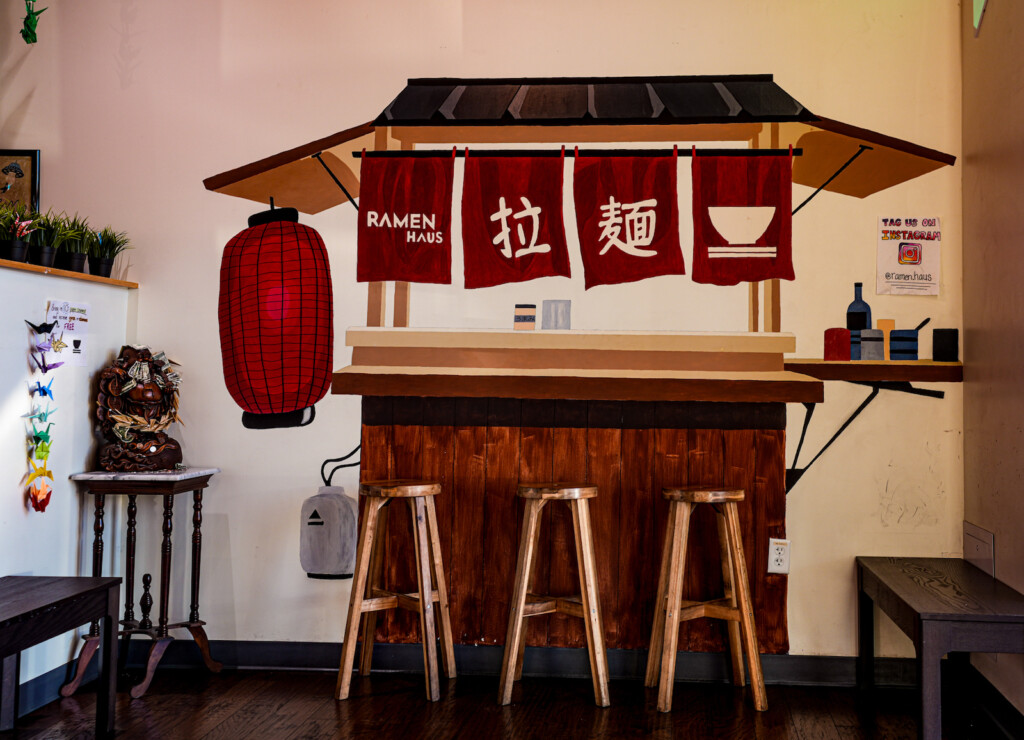
Ramen Haus is owned by Megan and Weston Lay, who say, “We’re a half-Japanese family of four that loves both Japanese and American culture. We have two awesome kids that love helping our amazing team and loyal customers.” Weston – who is very genial and a Japanese cuisine enthusiast, spoke to me about taking over Ramen Haus in Ogden just 10 days before in-house dining was closed down due to the COVID pandemic. Bad timing. But making lemonade out of lemons, the Lays and their team “pivoted” and focused on helping and serving the community. “We got online, started to-gos, and developed our team in the midst of chaos,” they said.
Stepping into the Farmington Ramen Haus, I immediately noticed the strings of origami cranes hanging from the ceiling, which took me back to my time spent in Japan. In the Japanese tradition, folding 1,000 paper cranes, or senbazuru, is said to grant a wish or bring good luck and happiness. The crane is a symbol of longevity and fortune in Japan, and its wings are believed to carry souls to paradise. I loved seeing all the cranes at Ramen Haus and Weston told us that during the pandemic they gave free appetizers to customers who would bring paper origami cranes to the restaurant, a tradition that they are still honoring today.
Karaage Chicken
Before jumping into the Ramen Haus ramen, there are appetizers to recommend. I especially like the boneless, battered and fried Japanese-style chicken nuggets called Karaage ($7), which is served with a mild Dijon sauce. Other tempting starters include traditional Gyoza ($7) and Edamame ($5), as well as three types of Japanese Tsukemono Pickles ($4), Seaweed Salad ($5), Steamed Bun – pork, beef or Spam with kimchi, spinach and Haus aioli ($3), and Takoyaki ($7), which is fried wheat balls with octopus pieces.
Taro Fries
“People seem to either love them or hate them,” said Weston Lay of the Ramen Haus Taro Fries ($6). They are hand-cut taro root, fried, salted, and served with Haus aioli. I can’t say I loved the taro fries, but I didn’t hate them either.
Asian Pear Sparkler
Beverages at Ramen Haus include sodas, Korean Milkis soft drinks, an Asian Pear Sparkler, Hot Tea, Japanese Ramune & Cream Sodas, Asian Pear Tea, Beer and Sake. Weston mentioned he was especially proud to team with Tsuki Sake, which is a Utah-based sake brewing company. “We’re proud to be part of their mission to increase education and awareness of Japanese cuisine and culture!” he said. Ramen Haus carries Harvest Moon White Peak Nigori and Super Moon Junmai Daiginjo sakes from Tsuki, as well as Momokawa Silver Lake, Tozai Snow Maiden, Gekkeikan Sake, and Moonstone Asian Pear Sake, as well as imported Asian beers. My wife enjoyed her Asian Pear Sparkler ($3.50) – pears with house-made Ginger-Lemon syrup.
Ramen Haus currently serves seven different ramen varieties including two vegetarian versions: Vegetarian Miso Ramen ($11) and Veggie Shio Ramen ($11). Both begin with a veggie broth base; the Miso Ramen features miso tare (sauce) while the Shio Ramen includes shio tare. Aside from that, the two veggie ramens are the same and include a choice of regular, spinach, or yam noodles – the latter are gluten free.
Tonkotsu Ramen
Meat-based ramens include Umami Bomb Ramen ($15) with spicy ground pork, black mushrooms and black garlic oil, Tonkotsu Ramen ($11), Shoyu Ramen ($11), Spicy Ground Pork Ramen ($11), and Shio Ramen ($11), which includes a choice of pork chashu or beef. All of the meat ramens at Ramen Haus begin with slow-cooked (more than 24 hours per batch) pork bone broth which bathes a mixture of green onions, corn, ajitama egg, seaweed and thin ramen noodles. I particularly enjoyed the Hakata-style Tonkotsu Ramen, with its creamy, rich pork broth, thin and tender pork chashu slices, and perfect ajitama egg. Preparing ajitama eggs for ramen is a laborious process and in my opinion, the ramen eggs at Ramen Haus are the best I’ve encountered – they’re ajitama perfection. Some 200 eggs per batch are soft boiled, then carefully cracked and allowed to steep in a soy-mirin-sugar mixture which both flavors the eggs and imparts a dark exterior to the whites. Interesting ramen add-ons include spicy miso made with Carolina Reaper peppers, black mushrooms, kimchi, and narutomaki (fish cake). I found the noodle portion in my tonkotsu ramen to be more generous than at many ramen restaurants and the prices – most ramen bowls are $11 – to be lower than most, as well. The ramen at Ramen Haus is nothing if not a great bang for the buck.
Hiyashi Chuka Soba
A dish that owner Weston Lay is especially happy to let folks know about – it’s not served in most ramen houses – is called Hiyashi Chuka Soba ($12). It’s a great summertime dish – a traditional melange of cold sweet and savory sesame.soy-flavored wheat noodles with toppings such as cherry tomatoes, seasoned bean sprouts, chopped scallions, cucumber sticks, corn, soft-boiled ajitama egg, and strips of Ramen Haus’ signature pork chashu. It’s a satisfying and refreshing dish.
Vegetarian Rice Bowl
Additional entree-style dishes include Chashu Pork or Beef Rice Bowl ($11), Curry Udon ($13), Katsu Curry ($13), Japanese Miso Noodle Bowl ($12), and my wife’s favorite dish: Vegetarian Rice Bowl (which can also be gluten free). It’s a bowl of steamed white rice topped with fresh spinach, green onions, bean sprouts, corn, seaweed, sweet brown okonomi sauce, and a choice of gluten free fried tofu or panko-crusted tofu.
Curry Udon
I returned to Ramen Haus for lunch to try their Curry Udon ($13) and really liked it. Soft, thick udon noodles are bathed in a slightly spicy curry sauce with small tasty beef nuggets, carrot and onion, topped with one of those awesome ajitama eggs and a crisp panko-crusted, fried pork cutlet. The cutlet was drizzled with sweet and savory okonomi sauce. It was a very filling lunch! By the way, during lunch I loved – given my age – the music channel playing in the restaurant, taking me back a few decades with songs like “My Sharona” and “Come on Eileen.”
If you’re looking for a restaurant that offers the flavors, spirit, and hospitality of an authentic Japanese ramen shop, then you’ve found it at Farmington and Ogden’s Ramen Haus restaurants. I already can’t wait to return.
Photos by Ted Scheffler
Culinary quote of the week: “Contemporary ramen is totally different than what most Americans think ramen should be. Ramen is not one thing; there are many, many different types.” – David Chang

